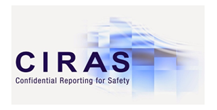STREET WORKS QUALIFICATION REGISTER (SWQR)
QUALIFICATION FOR SUPERVISORS: UNIT: S6-MONITORING REINSTATEMENT OF CONCRETE SLABS
Pre-Requisite:
Street Works Assessment Standards – Monitoring the Reinstatement of Concrete Slabs
Certificate Aim
This certificate has been designed to allow the candidate to demonstrate the skills and knowledge required to monitor the reinstatement of concrete slabs. The candidate will be able to monitor preparation and construction of concrete slab and will be able to monitor site safety throughout concrete slab reinstatement.
Monitoring reinstatement of concrete slabs
Learning Outcome 1 Monitor the preparation for concrete slab reinstatement
Assessment criteria:
1.1 ensure that the materials selected for use are identified and checked against the current specification
1.2 ensure that the equipment selected for use is:
(a) suitable to the site conditions and materials
(b) suitable to the prescribed operation
(c) in working condition and safe to use
1.3 ensure that sub-base defects are identified and made good using specified materials
1.4 ensure that slab edges are prepared according to the specification to form a support using steel dowel bars
1.5 ensure that the slip membrane is positioned according to the specification
1.6 ensure that slab edge support is provided
1.7 ensure that mesh reinforcement is fixed according to specification
1.8 check for any problems with the preparation for concrete slab reinstatement and confirm the appropriate action.
Learning Outcome 2 Understand how to monitor the preparation for concrete slab reinstatement
Assessment criteria:
2.1 identify the type of carriageway on which the reinstatement of concrete slabs is carried out
2.2 define the factors that influence the selection of materials and equipment for reinstating concrete slabs
2.3 identify different potential sub-base defects
2.4 state how to rectify different sub base defects
2.5 define the procedures for positioning the slip membrane and preparing slab edges
2.6 define the procedures for providing taper edge and dowel bar support
2.7 define the procedures for laying and fixing mesh reinforcement
2.8 state the potential problems with the preparation for concrete slab reinstatement and the appropriate remedial action.
Learning Outcome 3 Monitor the reinstatement of concrete slabs
Assessment criteria:
3.1 monitor the construction of the concrete slab, checking:
(a) replacement of missing or damaged joints
(b) use of concrete
(c) degree of compaction
(d) air entrainment
3.2 ensure that the finish is laid to the permitted tolerances and textured to match the existing surface
3.3 check the use of a curing membrane
3.4 check for any problems with the reinstatement of concrete slabs and confirm the appropriate action.
Learning Outcome 4 Understand how to monitor the reinstatement of concrete slabs
Assessment criteria:
4.1 define the methods used to construct concrete slabs
4.2 state the different joints used in constructing concrete slabs
4.3 define the construction methods for different joints
4.4 define factors that affect the quality of the finished concrete surface
4.5 define the checks and tests to confirm the quality of the concrete slab and finished surface
4.6 state the potential problems with the reinstatement of concrete slabs, and the appropriate remedial action.
Learning Outcome 5 Monitor site safety
Assessment criteria:
5.1 ensure that a risk assessment has been carried out
5.2 monitor site operations in accordance with health and safety requirements
5.3 assess site conditions in accordance with health and safety requirements
5.4 ensure that safety equipment is available and fit for purpose
5.5 ensure that safe working practices are followed in line with health and safety requirements and current relevant specifications
5.6 check for risks to site safety, and confirm the appropriate action required
5.7 ensure that the site is left in a clean and safe condition.
Learning Outcome 6 Understand how to monitor site safety
Assessment criteria:
6.1 define the purpose of a site specific risk assessment
6.2 state the health and safety requirements for site operations
6.3 define the health and safety requirements for particular site conditions
6.4 define the safety equipment required during site operations and how to ensure that it is fit for
purpose
6.5 state the safe working practices on site
6.6 define the potential risks to site safety and the appropriate remedial action
6.7 state how to leave the site in a clean and safe condition.
Evidence Requirements / Scope
Some terms, used in the assessment criteria, cover a range of situations, as follows:
1. Equipment includes:
(a) hand tools – including as necessary square mouth shovel, hand pick, rake, hand rammer, reinforcing bar cutters, wire cutting tools, trowel, hand tamping beam, hard bristle broom
(b) powered equipment – including vibrotamper, powered concrete cutting equipment, powered concrete drill, powered saw, a proprietary vibrator.
2. Sub-base material includes:
(a) granular sub-base type 1 material
(b) pavement quality concrete (as described in specifications and SHW 1000)
(c) alternative reinstatement materials (ARMs).
3. Specifications and procedures include:
(a) Specification for the Reinstatement of Openings in Highways
(b) Specification for Highways Works Series 1000
(c) Health and Safety Guidance 150, Health and Safety in Construction
(d) manufacturers’ operating procedures for powered tools and plant.
(e) Safety and Street Works and Road Works – A Code of Practice.
4. Safe working practices include:
(a) safe use of tools and equipment
(b) use of PPE (including, as necessary: high visibility jacket or waistcoat, hard hat, ear defenders, gloves, protective footwear, waterproof clothing, eye protection visor or goggles, dust mask)
(c) use of risk assessment methods to identify and control hazards on site
(d) precautions to minimise danger or inconvenience to road users
(e) precautions to minimise danger or inconvenience to site personnel
(f) precautions to minimise damage to equipment or apparatus.
5. The dowel bars are steel dowel bars of 20mm or 25mm nominal diameter.
6. The mesh reinforcement includes standard weights of mesh reinforcement.
7. Joints include:
(a) dowel bars and their assembly
(b) tie bars
(c) supporting cradles
(d) contraction joints
(e) expansion joints
(f) warping joints
(g) construction joints
(h) prefabricated joint assemblies
8. The concrete includes:
(a) Class 40 concrete
(b) air entrainment additive.
9. Safety equipment may include as necessary:
(a) adequate range of signing, lighting and guarding equipment (including signs, cones, signals, lamps, footway boards, barriers, portable traffic signals)
(b) high visibility safety equipment
(c) suitable materials to construct ramps.
10. Types of roads (including Type 0-4 concrete and bituminous overlaid concrete roads and commercial vehicle crossings) AC 2.1
11. Factors influencing selection of materials and equipment (including the specification options for concrete slabs, quality control of ready mix and site-mixed concrete, the position and spacing of dowel bars and reinforcement, methods of curing concrete and the treatment of commercial vehicle access) AC 2.2
12. Factors that affect the finished quality of concrete (including visual defects – transverse, longitudinal and random cracking) AC 2.9
13. Checks to confirm quality of concrete (including profile checks – finished level in respect of surrounding surface and surface texture, concrete cube crushing test, slump test) AC 2.10
Assessment Requirements and Guidance
Assessment for this unit consists of practical observations and a multiple-choice knowledge examination to cover the requirements of the learning outcomes.
Current requirements for practical observations, including Assessor and Internal Quality Assurer qualifications and facilities requirements are provided in the HAUC (UK) The Street Works Assessment Strategy.



